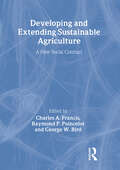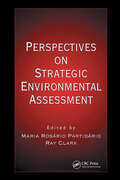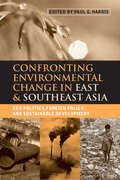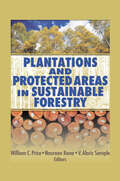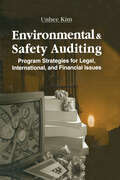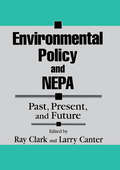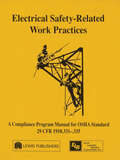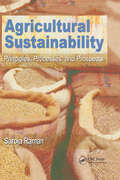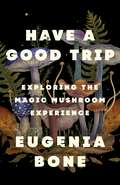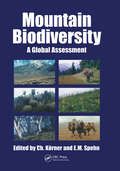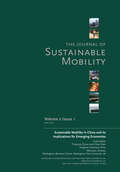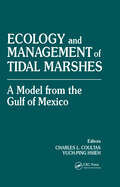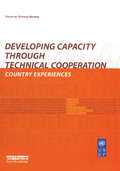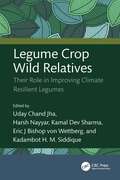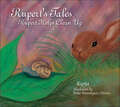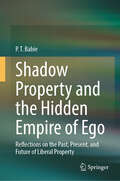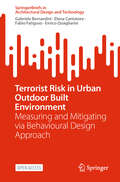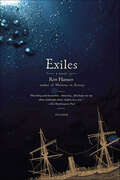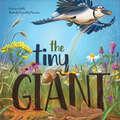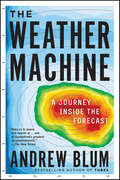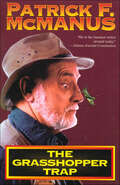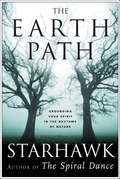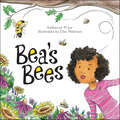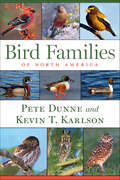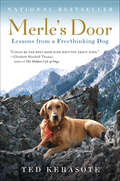- Table View
- List View
Developing and Extending Sustainable Agriculture: A New Social Contract
by Charles A. Francis George W. Bird Raymond P. PoincelotGet the latest sustainable agriculture practices and keep an eye on the future Developing and Extending Sustainable Agriculture: A New Social Contract explores the challenges faced by today’s farmers and ranchers to provide practical strategies to develop a twenty-first century system of sustainable agriculture that is economically sound, environmentally compatible, and socially acceptable. This comprehensive look at the current state of farming and ranching presents leading authorities discussing concepts and approaches in sustainable agriculture such as crop rotations, integrated pest management, alternative sources of nutrients to maintain productivity, and rotational grazing systems.Presently there is a trend toward a more industrial agriculture and a global food system that will bring long-term negative impacts. If farmers look thoughtfully toward the future, alternatives are now available to help solve these problems to provide agricultural sustainability for generations to come. Developing and Extending Sustainable Agriculture: A New Social Contract provides a model for integrated research and outreach to everyone interested in sustainable development. A sensible framework of practical short-term strategies are combined with visionary long-term plans to provide viable approaches to sustain agriculture, secure our food system, and develop a more equitable society for the future. The text includes several tables and figures, extensive references, and comprehensive bibliographies.Topics in Developing and Extending Sustainable Agriculture: A New Social Contract include: the evolution of the concept of equitable and sustainable development on-farm research farmer to farmer education IPM (integrated pest management) soil management managed grazing whole-farm planning, including economic analysis training for sustainable agriculture motivation theory and research to foster positive sustainable development organic farming productivity the future of sustainable agriculture much, much more Developing and Extending Sustainable Agriculture: A New Social Contract is enlightening, horizon-expanding reading perfect for educators, students, government decision makers, cooperative extension educators, specialists, administrators, citizen members of county extension boards, and administrators in land grant universities.
Perspectives on Strategic Environmental Assessment
by Ray Clark Maria Rosário PartidárioAn environmental assessment must be performed whenever a property transaction takes place. Those who donít may find themselves responsible for the past misdeeds of others. This book contains contributions by professionals from various locations who use Strategic Environmental Assessment (SEA) as a tool applied to water management issues. SEA helps make decisions that increase sustainability. Because of its procedural nature, it necessarily becomes tailor-made to different applications. Easily understood and geographic in scope, this book presents leading edge thinking and first hand knowledge on the applications of SEA in water management.Perspectives on Strategic Environmental Assessment is a comprehensive guidebook for performing environmental assessments all over the world. No other source provides you with as much information on the applications of SEA as a policy assessment and management tool. This book provides a blueprint for environmental assessments that safeguards you from the oversights of others.
Confronting Environmental Change in East and Southeast Asia: Eco-politics, Foreign Policy and Sustainable Development
by Paul G Harris'This is clearly a book with great breadth and diversity... a valuable addition to the literature about east and southeast Asia.'T Forsyth, Development Studies Institute London School of Economics and Political Science, in Land Degradation and DevelopmentAs their economies and populations expand, almost all Asian countries are experiencing profound ecological problems at the national, regional and global level; be it air pollution in rapidly growing cities, trans-boundary water pollution or climate change. While the countries of East and Southeast Asia are the victims of environmental change, they are also complicit in causing it at home and abroad. As these countries move towards international environmental cooperation, a central issue becomes the vital connection between foreign policy and environmental problems. Foreign policy is about pursuing and promoting national interests, however it is not always clear what a country's national interests are or ought to be, particularly with regard to complex international ecological issues. On top of this, it is almost always debatable how best to promote them.Confronting Environmental Change in East and Southeast Asia is a collection of concise, hard-hitting essays by a group of international experts and scholars that address these complex issues. The book takes foreign policy considerations into account in its analyses of how states and other actors in East and Southeast Asia confront environmental change through international cooperation and environmentally sustainable development.The first part of the book examines many of the actors, institutions and forces shaping environmental diplomacy and foreign policy in East Asia, with a focus on China and Japan. The second part of the book takes a deeper look at the relationships between ecological politics, international relations and environmentally sustainable development in East and Southeast Asia. Several chapters in the second part focus on how environmental foreign policies impact countries in the region as they endeavour to implement environmentally sustainable development. Together, the analysis and case studies in this volume illuminate how environmental change is confronted - or not - in East and Southeast Asia, with a host of important insights for researchers, governments, policy-makers, conservationists and business people dealing with the profound environmental problems facing the region.
Plantations and Protected Areas in Sustainable Forestry
by V. Alaric Sample William C. Price Naureen RanaUnderstand the social, economic, and environmental impacts of the development of forest plantationsand the conservation involvedControversy surrounds the question of how to best protect forests of high conservation value, while meeting the growing demands for wood and wood fiber-based products. Plantations and Protected Areas in Sustainable Forestry presents the views of a diverse group of conservationists and natural resource professionals who examine important social and economic as well as ecological aspects of the debate. The goal of sustainable forest management is kept at the forefront of the discussions, while alternative strategies to meet economic and social needs are explored in light of the need to conserve biological diversity and protect other important ecological services and environmental values in key forest areas. For developed nations, there is an ethical responsibility to consider sensible development as well as environmental conservation. Plantations and Protected Areas in Sustainable Forestry discusses many of the prominent issues that are raised when considering intensively managed forests (plantations) and/or strict protection of high conservation value forests (protected areas) in the United States and elsewhere. These issues include: the role of plantations and their management; forest management certification to ensure sustainability; job creation from plantations, the effects of intensive forest management on society and the environment; and the protection of biodiversity. This book provides a solid foundation on which to form a consensus that addresses the needs of economics and society as well as forest conservation.Topics in Plantations and Protected Areas in Sustainable Forestry include: the future of forest plantations forest management certification community benefits derived from intensively managed industrial roundwood plantations the extent to which intensive forest management practices on plantations prevent degradation of natural forests positive and negative impacts of plantations on environmental and social values alternative approaches for investment in wood production global policy perspectives on intensive forest production global strategies for biodiversity conservation Plantations and Protected Areas in Sustainable Forestry provides a diversity of perspectives on one of today’s most important developments in international forest policy and international trade in the forest sector. It is intended to contribute to better-informed decision-making, and is an important book for policymakers, forest resource management professionals, and business leaders working to develop practical and effective strategies for sustainable forest management.
Environmental and Safety Auditing: Program Strategies for Legal, International, and Financial Issues
by Unhee KimThis is a complete and concise guide to creating and managing a successful environmental audit program. It provides step-by-step guidance on setting up an audit program for nearly every major component of environmental concern, from air standards to workplace safety, and from effluent discharge to waste handling and disposal.
Environmental Policy and NEPA: Past, Present, and Future
by Ray Clark Larry CanterEnvironmental Policy and NEPA is a concise study of environmental policy-where we have come from, what we are facing and where we can go in the future. An outgrowth of initiatives taken by the Council of Environmental Quality (CEQ), and edited by the current Associate Director, this publication studies the effectiveness and efficiency of the implementation of the National Environmental Policy Act (NEPA).Divided into three main sections, part one covers the historical background and trends of NEPA. Part two addresses current substantive and conceptual issues associated with the environmental impact assessment (EIA) process. Part three discusses future opportunities including impact on humans, effective public participation in the EIA process and the need for sustainability.This excellent reference brings together 28 contributing authors who combine their expertise to address a multitude of topics. Environmental Policy and NEPA is mandatory reading for the professional, researcher, government policymaker, activist, student or anyone looking for a complete presentation of the EIA process.
Electrical Safety-Related Work Practices: OSHA Manual
by Richard EnnisElectrical Safety-Related Work Practices is a complete training package that describes 29 CFR 1910.331-.335, OSHA's Electrical Safety-Related Practices Standard, and outlines the requirements for training employees exposed to electrical hazards. The program presents a thorough overview of electrical safety as it applies to the standard. Topics covered include electrical accidents, qualified and unqualified persons, employee training, work practices covered by the standard, protective equipment, and protective shields and barriers. A complete implementation plan, standard checklists, a summary of the standard, and a copy of OSHA's "Illustrated Guide to Electrical Safety" are provided in addition to a sample employee training booklet. Electrical Safety-Related Work Practices is the perfect training tool for risk managers, safety managers, line production supervisors, engineers, and maintenance workers affected by this OSHA standard.This complete training package contains implementation/compliance manual, VHS tape, employee training booklet.
Agricultural Sustainability: Principles, Processes, and Prospects
by Saroja RamanTake a balanced look at ways to ensure food security and to work to erase hunger around the worldAgriculture is the most aggressively managed ecosystem. Agricultural Sustainability: Principles, Processes, and Prospects provides a comprehensive examination of all facets of agricultural sustainability, beginning with the history of the evolution of the concept to the present. Challenges to sustainability are clearly presented along with practical strategies to counter prospective problems. This vital resource considers options for the future, as well as reviewing past approaches for their value in today’s world.When one considers that the alternative to agricultural sustainability is the collapse of the world’s food systems, it is understood that compromise is impossible. Agricultural Sustainability takes a holistic approach to the issues that are involved in making agriculture ecologically sound, economically viable, and socially responsible around the world. The book is divided into three parts. Part One clarifies the concept of agricultural sustainability, bringing a rational and balanced view of the core elements. Part Two discusses ways to promote sustainability in the world, including practical scientific and technological processes for improving yields while ensuring food security for future generations. Part Three peers into future decades, reviewing the vision documents of international agencies, their perceptions and expectations for the years ahead, and present dysfunctional aspects in the current food system. The book is extensively referenced and includes figures and charts to clearly explain data.The book examines: the historic evolution of the concept of agricultural sustainability the combined effects of a multiplicity of agricultural systems concepts for validating the sustainability of a production system the role of natural capital in production the role of science and technology in sustainable use managing land, water, biodiversity, and energy quantitative approaches to measuring agricultural sustainability the current status of agricultureand predictions for its growth in the coming decades case studies of agricultural growth from India and China problemsand possibilitiesof creating a hunger-free world by the end of this century Agricultural Sustainability is crucial, enlightening reading for field workers in NGOs and agricultural extensions; personnel in local, national, and international developmental organizations; and educators and students of sustainable agricultural production, food security, rural development, environmental science, and the conservation of natural resources.
Have a Good Trip: Exploring the Magic Mushroom Experience
by Eugenia BoneFrom a much-loved expert and popular science writer comes this straight-from-the-trenches report on how and why folks from all walks of life are using magic mushrooms to enhance their lives.Interest in psychedelic mushrooms has never been greater – or the science less definitive. Popular science writer and amateur mycologist Eugenia Bone reports on the state of psychedelics today, from microdosing to heroic trips, illustrating how “citizen science” and anecdotal accounts of the mushrooms’ benefits are leading the new wave of scientific inquiry into psilocybin. With her signature blend of first-person narrative and scientific rigor, Bone breaks down just how the complicated cocktail of psychoactive compounds is thought to interact with our brain chemistry. She explains how mindset and setting can impact a trip – whether therapeutic, spiritual/mystical, or simply pleasure seeking – and vividly evokes the personalities and protocols that populate the tripping scene, from the renegade “’Noccers” of Washington who merrily disperse magic mushroom spores around Seattle, to the indigenous curanderas who conduct traditional ceremonies in remote Mexican villages. Throughout she shares her journey through the world of mushrooms, cultivating her own stash, grappling with personal challenges, and offering the insights she gleaned from her experiences. For both seasoned trippers and the merely mushroom curious, Have a Good Trip offers a balanced, entertaining, and provocative look at this rapidly evolving cultural phenomenon.
Mountain Biodiversity: A Global Assessment
by Ch. Körner E. M. SpehnThis book is the result of the first global conference on mountain biodiversity, and is a contribution to the International Year of Mountains, 2002. The Global Mountain Biodiversity Assessment program is a Special Target Area Region project of DIVERSITAS (UNESCO and UNEP). Biological diversity is essential for the integrity of mountain ecosystems and this dependency is likely to increase as environmental (climate) and social conditions change. Steep terrain and climate, and severe land-use pressure cause mountain ecosystems to rank among the world's most endangered landscapes. The 28 chapters in this book represent research on the biological riches in all major mountain ranges of the world, and synthesize existing knowledge on mountain biodiversity - from diversity of bacteria, plants and animals to human diversity. The book is divided into five sections: an introduction providing an overview of the issues; plant and animal diversity; climate change and mountain biodiversity; land use and conservation; and a synthesis.
Journal of Sustainable Mobility Vol. 2 Issue 1: Sustainable Mobility in China and its Implications for Emerging Economies
by Michael Zhang Fuquan Zhao Han HaoAfter three decades of rapid economic growth, China became the world’s second largest economy in 2010 after the United States of America. Along with the prospect of lifting millions out of poverty and improving living standards, China is facing yet new challenges of rapid urbanization. Recent research findings show that in 2012 urbanization rate was 52.6% in China (Lacy et al., 2013). It is predicted that by 2020 the number of megacities in China with an urban population of more than 10 million will increase to thirteen. Along with the increase in urban population and living standards there has been rapid increase of car ownership in China. It is estimated that there are more than five million vehicles in Beijing (Cheng, 2013; Economist, 2013). Large cities and prefecture-level cities already contributed 89.6% of China’s total industrial CO2 emissions. One day in January 2013 air in Beijing was heavily polluted to a level of toxicity (smog) forty times the standard safe level set by the World Health Organization (Economist, 2013).At the international level, transport contributed 61.5% to world petroleum consumption and 22.3% to global CO2 emissions in 2010 (IEA, 2012). While the overall level of CO2 emissions in developed economies is stabilizing and in some cases declining, the levels in the developing and emerging economies are increasing. Large emerging economies with megacities will imminently become the major concerns of transport-related CO2 emissions. Without strategic innovations in the automotive industry and transport management system the current state of China’s transport sector is not sustainable. The long-term sustainable solutions are likely to emerge from the interplay of economic, environmental, social and technological factors.The Special Issue, partnered with the Second International Symposium on Sustainable Mobility, focuses on the issues of developing policies and corporate strategies to help the automotive industry, transport management systems, and urban planning to embark on a sustainable path to future growth and development (WBCSD, 2007; World Bank, 2008). The critical debate and research findings of this issue shed light on future research and practice on sustainable mobility in emerging economies.
Ecology and Management of Tidal MarshesA Model from the Gulf of Mexico
by Charles L. CoultasThis is a major compendium of the existing knowledge of the ecology and management of tidal marshes by some of the leading experts in the field. The major theme of the book is the interconnectedness of the marsh, plants, marine organisms, soils and geology, energy and money flow, and legal and management effects on the system.Emphasis is placed throughout on the fact that nature has provided a free service that can either be maintained and enhanced by man or destroyed and forever lost. At a time of declining fisheries, this book points the way to management strategies that are needed to effect improvement.
Developing Capacity Through Technical Cooperation: Country Experiences
by Stephen BrowneTechnical co-operation involving northern experts transferring expertise to the south has not always worked. In fact it has sometimes been counter-productive, fostering a dependency on outside help rather than creating a genuine indigenous capability. This study by experts from Harvard University and the UN Development Programme (UNDP) uses a range of country studies to analyze what has worked in the past, what hasn't, and how to ensure that future co-operation results in genuine capacity building and ownership of the new capabilities by the recipients. It aims to offer a framework for evaluating different methods to achieve these goals. The volume is a companion to the earlier Capacity for Development, and should be useful for all those working in international development, as well as researchers, academics and students.
Legume Crop Wild Relatives: Their Role in Improving Climate Resilient Legumes
by Harsh Nayyar Uday Chand Jha Kamal Dev Sharma Bishop von Wettberg, Eric J Siddique, Kadambot H. M.Grain legume crops are an important component of global food and nutritional security and help in maintaining agro-ecological systems. They fix atmospheric nitrogen via the root-inhabiting rhizobacteria, thereby minimising the harmful effects caused by the excessive application of synthetic nitrogenous fertilizers in the soil environment. There has been less focus on legume crop wild relatives for harnessing their potential traits and novel gene(s) to incorporate them into the cultivated legumes for developing climate-resilient grain legumes. In this edited book, we will highlight the importance of various potential traits of crop wild relatives, which are yet to be properly harnessed for designing future climate-resilient grain legumes. We also update how advances in molecular genetics and genomics have enabled the underpinning of several candidate genes/genomic regions in various crop wild relatives harbouring adaptive traits that confer climate resilience in grain legumes.Readers will benefit from new information on various crop wild relatives in grain legumes and how these wild relatives could be explored for novel climate resilience genes for developing future climate-resilient legume crops. They will gain an understanding of how genomic advances (genome sequence, pan genomes) have uncovered the novel genomic regions attributed to climate resilience in various grain legumes. Finally, the critical role of these wild relatives in maintaining the lost gene(s) due to the domestication process will be discussed.Comprehensive information on conventional breeding, advanced breeding, and recent advances in genomics covering all the major crop wild relatives of legumes is not available in a single book. Thus, this book will provide readers with the latest updates on various information covering all aspects of wild species of legumes.
Rupert's Tales: Rupert Helps Clean Up
by KyrjaRupert the rabbit is curious, furry, brown, and helpful, and it seems his lessons never end! With the help of human, animal, and fairy friends, he learns about reducing, reusing, and recycling, and how each of us has an important part to play in taking care of the world around us. A cloud of dragonflies, a singing frog, a lonely snail, a smart cat, and even a clever crow all have things to teach Rupert throughout his adventures in these four stories. Rupert's Tales are enhanced by 40 vivid pastel illustrations that create scenes sure to spark a sense of wonder at the beauty of nature. Lyrically enchanting, Rupert's adventures lovingly introduce children to the important task of fostering our natural environment.
Shadow Property and the Hidden Empire of Ego: Reflections on the Past, Present, and Future of Liberal Property
by P. T. BabieThis book explores the nature of liberal property in the twenty-first century. It contains three parts. The first examines how we have arrived at the liberal concept of property—what many scholars call the 'bundle of rights' metaphor of property. This part argues that the liberal conception embodied in the bundle of rights metaphor is really a way of masking or hiding what property really is: an exercise of ego about the way goods and resources are used. Or, put another way, it enshrines the ability to suit personal preferences about the way things are used, rather than what might better serve the common good. The second part provides an important modern critique of the bundle of rights metaphor—that, in addition to being a collection of rights, property is also about social relations that exist between people. Through these social relations, which are contained in law, any decision that a person makes about how to use a good or resource necessarily carries implications for others. While those effects can be both positive and negative, we are much more familiar with the latter, including most of the global challenges we face today—climate change, extreme weather, global hunger, and global poverty. Taking those global challenges as its focus, the final part of the book suggests possible futures of property in which it is reconceived in ways that reduce the potential for negative impacts on others.
Terrorist Risk in Urban Outdoor Built Environment: Measuring and Mitigating via Behavioural Design Approach (SpringerBriefs in Architectural Design and Technology)
by Gabriele Bernardini Fabio Fatiguso Enrico Quagliarini Elena CantatoreThis open access book outlines the latest results in analysing, assessing, and managing terrorist risk in the urban outdoor built environment. In detail, contents refer to the outdoor Open Areas (such as streets, squares, urban parks and other public spaces in our cities) exposed to such violent events considering the physical elements and properties of the built environment and users. PThe built environment features, including layout, use and management, are combined with terrorist threats issues and user behaviours in emergency conditions, to determine a set of complementary tools for the reduction of risk and increase of urban resilience. The contents hence provide different levels of tool analysis, for risk scenario definition, risk assessment, mitigation strategies design and effectiveness evaluation, considering traditional approaches about the issue along with simulation-based approaches relying on understanding and representing user behaviors. This “behavioural design” approach offers the opportunity to manage the level of risk for specific real urban cases over going the normative limitations in Europe that are only referred to few countries and sometimes deal with the prevention of violent acts by intelligence activities as the exclusive way to face this issue. In addition, the focus on the characters of cultural and historic places and their resilience is increasing by means of introduction of mitigation and compatible solutions providing a complementary chapter for the design of resilient cities in all of their peculiarities (peripheries, consolidated, and historical). In this sense, it is one of the first organized attempts to analyse the main limitations of current solutions in these outdoor Open Areas and, at the same time, to clearly introduce the importance of human behaviours and the various choices in emergency evacuation conditions, thanks to the proposed behavioural-based simulation approach. The attention is focused on a critical aspect for historic spaces, where morphological conditions are fixed values. Thus, this book represents a sort of guidelines about these user-related issues during such violent events and is useful to both professionals and researchers in the areas of security and urban administration.
Exiles: A Novel
by Ron HansenWith Exiles, Ron Hansen tells the story of a notorious shipwreck that prompted Gerard Manley Hopkins to break years of "elected silence" with an outpouring of dazzling poetry. In December 1875 the steamship Deutschland left Bremen, bound for England and then America. On board were five young nuns who, exiled by Bismarck's laws against Catholic religious orders, were going to begin their lives anew in Missouri. Early one morning, the ship ran aground in the Thames and more than sixty lives were lost—including those of the five nuns. Hopkins was a Jesuit seminarian in Wales, and he was so moved by the news of the shipwreck that he wrote a grand poem about it, his first serious work since abandoning a literary career at Oxford to become a priest. He too would die young, an exile from the literary world. But as Hansen's gorgeously written account of Hopkins's life makes clear, he fulfilled his calling. Combining a thrilling tragedy at sea with the seeming shipwreck of Hopkins's own life, Exiles joins Hansen's Mariette in Ecstasy (called "an astonishingly deft and provocative novel" by The New York Times) as a novel that dramatizes the passionate inner search of religious life and makes it accessible to us in the way that only great art can.
The Tiny Giant
by Barbara CilettiHow do forests grow? Follow the journey of one tiny acorn from seed to tree and celebrate how the power of one can touch so many. As the seasons pass and the weather changes, the tiny acorn steadily supports a thriving ecosystem and eventually grows into a giant oak tree—one day destined to become a magnificent forest. Accompanied by information on various oak varieties and how to grow your own oak tree, young readers will delight in learning how one small thing can create something so significant.
The Weather Machine: A Journey Inside the Forecast
by Andrew BlumFrom the acclaimed author of Tubes, a lively and surprising tour of the infrastructure behind the weather forecast, the people who built it, and what it reveals about our climate and our planetThe weather is the foundation of our daily lives. It’s a staple of small talk, the app on our smartphones, and often the first thing we check each morning. Yet behind these quotidian interactions is one of the most expansive machines human beings have ever constructed—a triumph of science, technology and global cooperation. But what is this ‘weather machine’ and who created it? In The Weather Machine, Andrew Blum takes readers on a fascinating journey through an everyday miracle. In a quest to understand how the forecast works, he visits old weather stations and watches new satellites blast off. He follows the dogged efforts of scientists to create a supercomputer model of the atmosphere and traces the surprising history of the algorithms that power their work. He discovers that we have quietly entered a golden age of meteorology—our tools allow us to predict weather more accurately than ever, and yet we haven’t learned to trust them, nor can we guarantee the fragile international alliances that allow our modern weather machine to exist.Written with the sharp wit and infectious curiosity Andrew Blum is known for, The Weather Machine pulls back the curtain on a universal part of our everyday lives, illuminating our relationships with technology, the planet, and the global community.
The Grasshopper Trap
by Patrick F. McManus“Funniest guy in the Outdoor Life and Field and Stream gang, McManus here offers another bag of whimsey in the Great Outdoors” —Kirkus ReviewsIn this collection of thirty zany stories, spoofing camping, fishing, and other outdoor recreational activities, McManus shares his hilarious wilderness misadventures. From facing an angry bear with an unloaded gun and the folly of running a boat while it’s still on the trailer to not questioning the ingredients found in camp cookout cuisine and the best methods of catching grasshoppers, no one knows how to express Mother Nature’s sense of humor like Patrick F. McManus.Praise for Patrick F. McManus“Patrick McManus is a treasure.” —The Atlantic“Everybody should read Patrick McManus.” —The New York Times Book Review“A style that brings to mind Mark Twain, Art Buchwald, and Garrison Keillor.” —People“Describing Patrick F. McManus as an outdoor humorist is like saying Mark Twain wrote books about small boys . . . the funniest writer around today—indoors or outdoors.” —The Atlanta Journal-Constitution
The Earth Path: Grounding Your Spirit in the Rhythms of Nature
by StarhawkThe bestselling author uses Wiccan sacred texts to show how we can have a more intimate connection with our surroundings.From time immemorial, artists and poets, prophets, and shamans have drawn strength and inspiration from walking the earth. In The Earth Path, bestselling author Starhawk takes the reader on a journey into the heart of the natural world, showing how we can have a more intimate connection with the world that surrounds us.Institutionalized religions have sacred texts—messages written in holy books that are the inspiration for their beliefs and rituals. But the sacred texts for Wicca, like other ancient native or indigenous traditions, are written in nature—in the magic circle of the elements: air, fire, water, and earth. With The Earth Path, Starhawk, an activist, ecofeminist, and leader in the women’s spirituality movement, places you in the center of that magical circle. As you become attuned to the rhythms of the earth, your thinking will shift from focusing on isolated objects to marveling at the multitude of interconnecting patterns and relationships in nature. These patterns and connections can hold the key to your own spiritual renewal and restore your sense of responsibility for preserving this world that nurtures and sustains us.Filled with awareness exercises, inspiring meditations, and magical rituals, The Earth Path not only teaches the reader to respect the ecology of our natural world, but shows how to spiritually connect with and channel the powers inherent in nature.Praise for The Earth Path“Starhawk presents an array of exercises and practices for sharpening observation and listening skills. She engages readers’ spirits and minds through her illustrative storytelling, offering ways to communicate more fully with the world and suggesting ways to act.” —Publishers Weekly“Lucid, appealing . . . a broad philosophy of harmony with nature, of human concord, sexual liberation, creativity, and healthy pleasure, as expressed and celebrated in a freewheeling worship of the universe.” —Kirkus Reviews
Bea's Bees
by Katherine PryorA perfect blend of story, facts, and humor, wrapped up in a message that encourages children to be socially active in their communities and to fight for their beliefs! Beatrix discovers a wild bumblebee nest on her way home from school and finds herself drawn to their busy world. When her bees mysteriously disappear, Bea hatches a plan to bring them back. Follow along with Bea as she uses her school library to learn facts about bumblebees and why they are critical to the sustainability of our planet. Can Bea inspire her school and community to save the bees? Bees provide us with valuable resources, and some types of bees are in danger of disappearing forever. But ordinary people (and kids!) can help save them. Filled with fascinating facts about bumblebees and ideas to help preserve their environment, Bea's Bees encourages kids to help protect bees and other pollinators. • Includes flower identification guide to species that attract bees to create pollinator gardens • Explains that bees are necessary to grow some of our favorite foods. • Tips for kids on how to spread pollinator gardens with the help of others.
Bird Families of North America
by Kevin T. Karlson Pete DunneFocusing on families and their shared traits makes bird identification easier than ever.This guide takes readers beyond merely identifying birds to understanding them. Many birders can tell the difference between a White-eyed and Bell&’s Vireo but cannot begin to describe a vireo and what distinguishes members of this family from warblers or flycatchers. The &“species by species&” approach makes it difficult to appreciate birds for what they are: members of well-organized groupings united by common traits. Putting the focus on families, and their shared characteristics, makes bird identification easier and more meaningful. More than 150 color photos illustrate the 81 bird families of the United States and Canada.
Merle's Door: Lessons from a Freethinking Dog
by Ted KerasoteWhile on a camping trip, Ted Kerasote met a dog—a Labrador mix—who was living on his own in the wild. They became attached to each other, and Kerasote decided to name the dog Merle and bring him home. There, he realized that Merle’s native intelligence would be diminished by living exclusively in the human world. He put a dog door in his house so Merle could live both outside and in. A deeply touching portrait of a remarkable dog and his relationship with the author, Merle’s Door explores the issues that all animals and their human companions face as their lives intertwine, bringing to bear the latest research into animal consciousness and behavior as well as insights into the origins and evolution of the human-dog partnership. Merle showed Kerasote how dogs might live if they were allowed to make more of their own decisions, and Kerasote suggests how these lessons can be applied universally.
